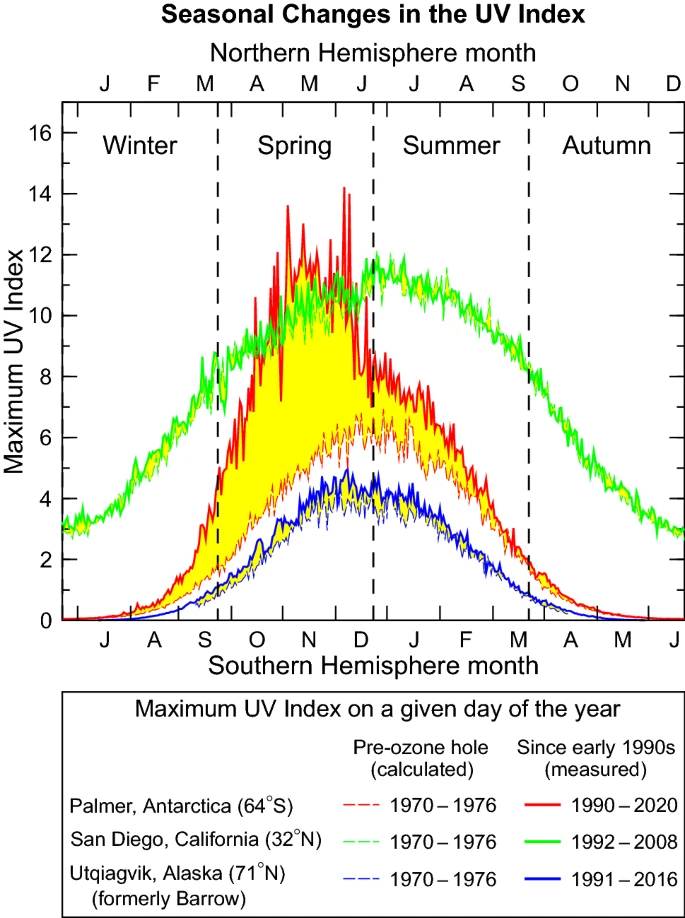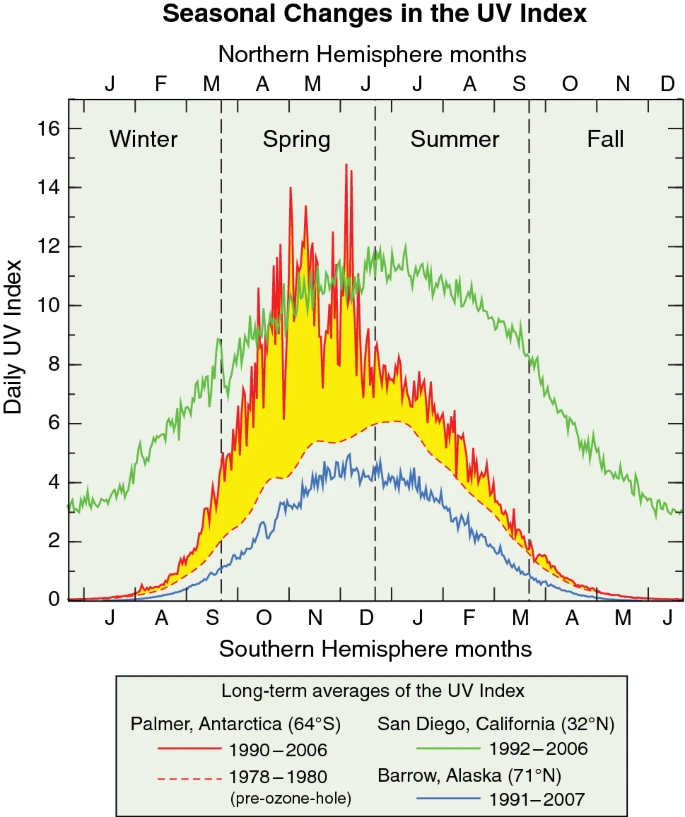Research confirms the large impact of the Antarctic ozone hole on UV radiation
By Xinyi Zeng (xinyi.zeng@noaa.gov), Science Communications Specialist
New research in the journal Photochemical & Photobiological Sciences confirms a large effect of the Antarctic ozone hole on UV radiation with updated analysis on Ultraviolet (UV) Indices at three locations. The lead author is Germar Bernhard from Biospherical Instruments, Inc who has a long-term contract and partnership with NOAA Global Monitoring Laboratory. Global Monitoring Laboratory scientists Kathleen Lantz and Scott Stierle are co-authors of the paper.
This research is a part of the continuous effort of the Scientific Assessment Panel (SAP) established under the Montreal Protocol to assess the effectiveness of this landmark treaty and track the recovery of the ozone layer. Since 2002, Q&A sections of Scientific Assessment of Ozone Depletion reports have featured the comparison of historical and current maximum UV Indices at Palmer Station, Antarctica, San Diego, California, and Utqiaġvik (formerly Barrow), Alaska.
The research team updated the previous 2010 analysis, extending the data length from 2006 to 2020, and reconstructed UV Index data at Palmer Station, San Diego, and Utqiaġvik for the pre-ozone-hole period (1970-1976).
Scientists found that since ozone depletion began, the peak UV Index ever measured on a given day of the year has more than doubled at Palmer Station in Antarctica. During the springtime (September – December) when ozone depletion occurs in Antarctica, the peak UV Indices at Palmer Station can exceed those measured at San Diego, where in most circumstances the UV Index is higher than near the poles.
At Utqiaġvik, the UV Indices are consistently lower than those measured at the two other locations. The springtime ozone depletion in the Arctic is much smaller compared to that in the Antarctic. Thus, scientists only observed small increases due to ozone depletion, with the largest spikes (up to 40% increase) in spring (March – June).
At San Diego, the impact of ozone depletion is hardly felt and the peak UV Indices on a given day of the year have remained essentially constant over the past fifty years.

Despite the addition of 14 years of data, the peak UV Indices remained quite consistent with the previous results, indicating the success of the Montreal Protocol on Substances that Deplete the Ozone Layer. With the international efforts continuing on, further large increases in UV radiation are not expected.
The results will be included in the Q&A section of the 2022 Scientific Assessments of Ozone Depletion report. Data from Palmer Station are provided by the NOAA Antarctic UV Monitoring Network. Daily maximum UV Index data from this network are also used in the analysis of the UNEP Environmental Effects Assessment Panel Update for 2021.
